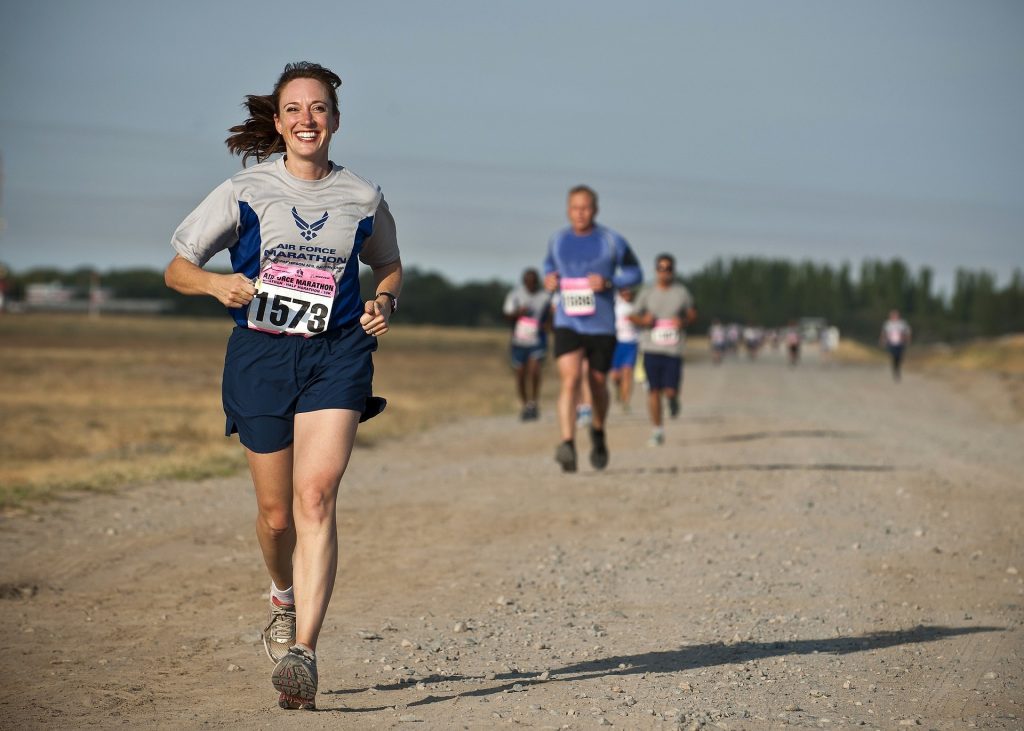16 Mar 5 Common Injuries Runners Want to Avoid
There’s no doubt, once you start running there’s a good chance you’ll be injured in the process. A whopping 98% of runners will be injured by their sport this year. Most running injuries are caused by overuse and can range anywhere from annoying to debilitating. Here are a few of the most common ailments that plague runners as well as some tips on how to prevent them.
Achilles Tendinitis
Achilles Tendinitis is characterized by swelling of the Achilles tendon, the tissue that connects your heel to your lower-leg muscle. It can be caused by a rapid increase in mileage, improper footwear, or being naturally flat-footed. Easy ways to prevent Achilles Tendinitis are to always stretch your calf muscles after your workout and to wear supportive shoes.
Runner’s Knee
Runner’s Knee a.k.a. patellar tendinitis is characterized by tender pain around or behind the kneecap. It occurs when constant pressure on the knees causes tear in the patellar tendon, the tendon that connects the kneecap to the shinbone. Runner’s knee is usually caused by repetitive pounding on the pavement, running downhill, or muscle imbalances in the hip. Easy ways to prevent Runner’s knee include avoiding hills, adjusting mileage, and stretching and strengthening the hamstrings, hip abductors, and quadriceps.
Ankle Sprains
An ankle sprain is caused when the ankle rolls in or outward stretching or tearing the ligaments that hold the ankle bones together causing serious pain. Ankle sprains usually need medical evaluation and can cause swelling, pain, ankle instability, limping, tenderness, and bruising. Easy ways to prevent ankle sprains are by avoiding uneven running surfaces, avoiding curbs, potholes, and tree branches, and wearing appropriate footwear. Balance exercises such as a single legged squat can also help strengthen the muscles around the ankle.
Stress Fractures
Stress fractures are tiny cracks in the bone caused by repeatedly pounding greater amounts of force than the bone can bear. They usually result in having to use crutches and in extreme cases surgery. Easy ways to avoid stress fractures is by cross training to prevent overuse, wearing proper shoes, and getting plenty calcium in your diet.
Iliotibial Band Syndrome
Iliotibial band syndrome is caused by inflammation of the iliotibial band, the thick tendon that stretches from the pelvic bone all the way down the thigh. Signs of Iliotibial band syndrome include pain in the knee, hip, or leg as well as swelling. It usually occurs after a dramatic increase the the number of miles you run, running downhill, or having weak hips. Iliotibial Band Syndrome is treated with rest, medicine to help the swelling, and sometimes cortisone injections. Stretching exercises along with managing mileage and avoiding hills are the best ways to prevent iliotibial band syndrome.
Shin Splints
Shin splints are characterized by an aching or stabbing sensation in the shins. They can occur when the muscles and tendons that cover the shin bones become inflamed. This is most often caused by…you guessed it… overuse and the constant pounding against the pavement. To stop the stabbing sensation, put ice on your shins for 15-20 minutes, keep them elevated, and take an anti-inflammatory medication to reduce swelling. Ensure you don’t get shin splints in the first place by wearing shoes that are an appropriate fit for your foot, avoiding hills, wearing shock-absorbing insoles, and running on a softer surface if possible.
Any of these sound familiar? If you’ve been injured recently or many years ago, we can teach you exercises that can help you strengthen your muscles and prevent further injury. If an injury has kept you from running, we can help get you back in the race. Call us at (662) 282-4949 for more information.




Sorry, the comment form is closed at this time.